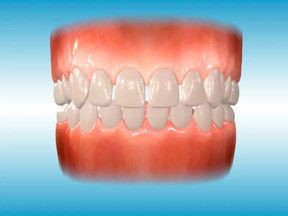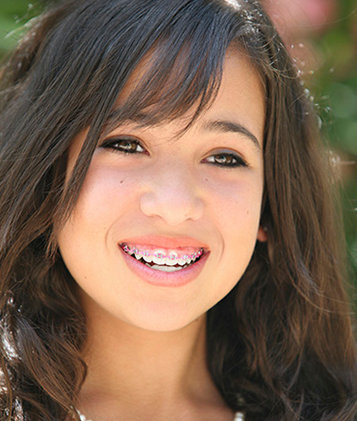Phase I treatment is oftentimes necessary for younger patients to establish the proper "foundation" for future dental and facial development. By creating the necessary space and properly aligning the existing teeth, we can guide permanent teeth into their proper position. The second phase of treatment takes place after the permanent teeth have erupted. In many cases, Phase I treatment can reduce the length of time required for the second phase.
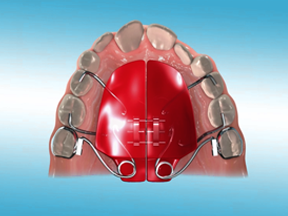
Class II problems represent an abnormal bite relationship in which the upper jaw and teeth are located in front of the lower jaw and teeth. Class II patients usually exhibit a convex facial profile with a recessed chin. In most cases, this relationship is due to inherent characteristics. A skeletal Class II problem occurs when the upper back molars are forward of the lower back molars…this gives the patient the appearance of a recessed lower jaw or an upper jaw that is protrusive (or both).
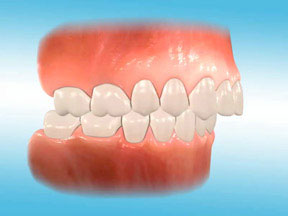
Class III problems are also primarily genetic in origin. In this instance, the lower jaw and teeth are positioned in front of the upper jaw and teeth. Facially, the appearance may give the impression that the lower jaw is excessively large, but in many cases the lack of upper jaw development is at fault. There are several treatment options to correct a Class III problem.
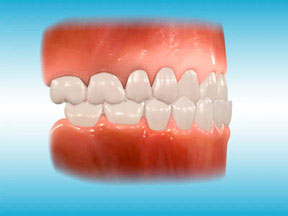
A posterior cross-bite will usually result from a narrow upper jaw or abnormally wide lower jaw. A narrow upper jaw will often force a patient to move their lower jaw forward or to the side, when closing into a stable bite. When closed into this accommodating position, the lower teeth are located outside the upper teeth. A posterior cross-bite can involve one side of the jaw, known as a unilateral cross-bite, or both sides of the jaw, known as a bilateral cross-bite.
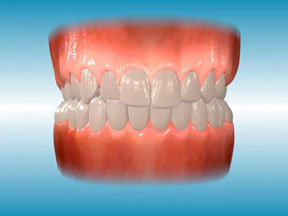
Crowding of the teeth is probably the most common orthodontic problem. This problem typically stems from a discrepancy between space of the jaw and the size of the teeth. Oftentimes, crowding can be just one of several orthodontic problems. Crowding can be the cause of, or the result of other problems such as impacted teeth, retained teeth or teeth that do not naturally fall out. Cross-bite of the front or rear teeth can also cause the teeth to become crowded.
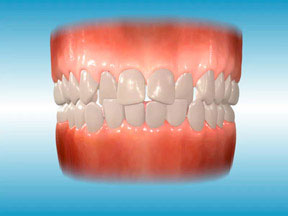
Also known as an overbite, a deep bite is excessive vertical overlapping of the front teeth and is often found in association with a discrepancy between the length of the upper and lower jaws. It usually results in excessive eruption of the upper or lower incisors or both.
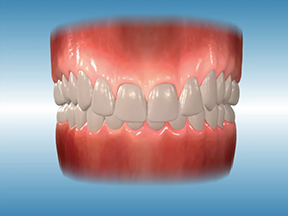
Also known as a gummy smile, this orthodontic problem gives the appearance of excessive exposed gums on the upper arch. There are several treatment options for this problem. In severe cases surgery may be necessary to actually remove a section of the upper jaw shifting the jaw upward vertically reducing the amount of exposure of the upper gum tissue.
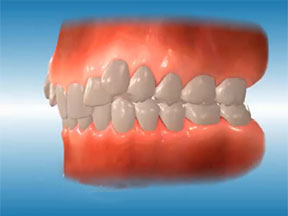
An openbite can occur with the front teeth, known as an anterior open-bite or with the back teeth, referred to as a posterior open-bite. An anterior open-bite is the lack of vertical overlap of the front teeth and can usually be traced to jaw disharmony or habits such as thumb sucking or the thrusting of the tongue against the front teeth. A posterior open-bite is a problem in which the back teeth do not meet vertically prohibiting the jaw to function properly.
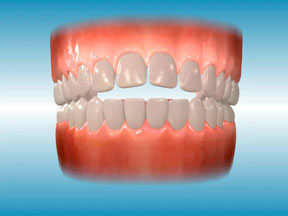
Also known as an deepbite, an overbite is excessive vertical overlapping of the front teeth and is often found in association with a discrepancy between the length of the upper and lower jaws. It usually results in excessive eruption of the upper or lower incisors or both.
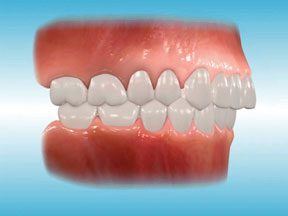
Spaces between teeth are another common problem associated with the need for orthodontic care. Like crowding, spacing may be related to a tooth-to-jaw size disharmony. Spacing may occur between the front and the back teeth. Tooth size discrepancies, such as smaller teeth or abnormally-shaped teeth, can also create abnormal spaces between the teeth.
